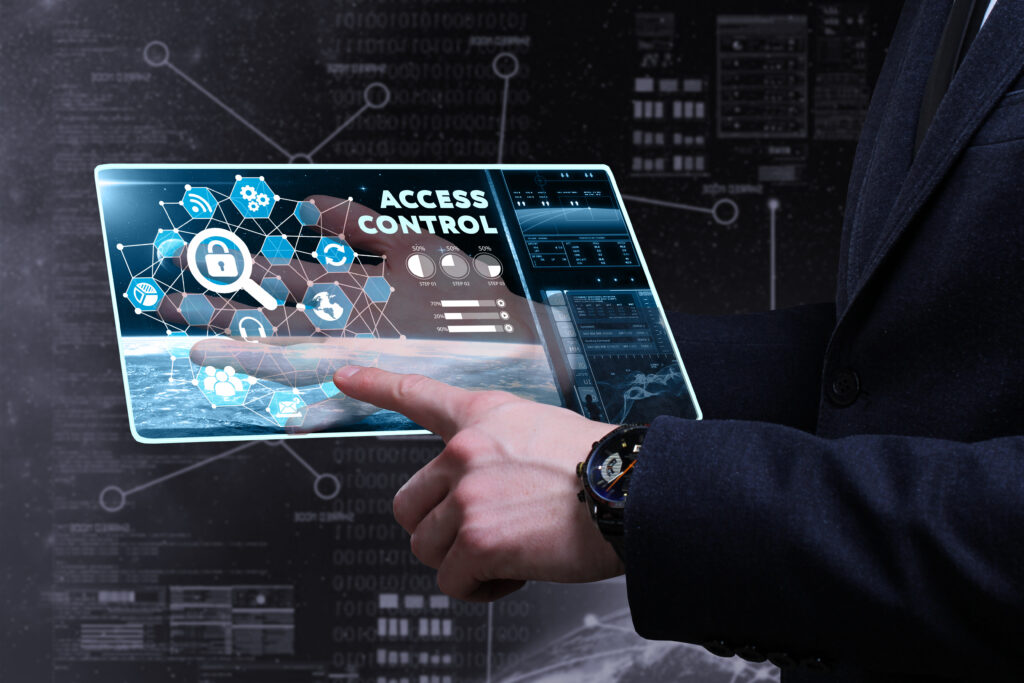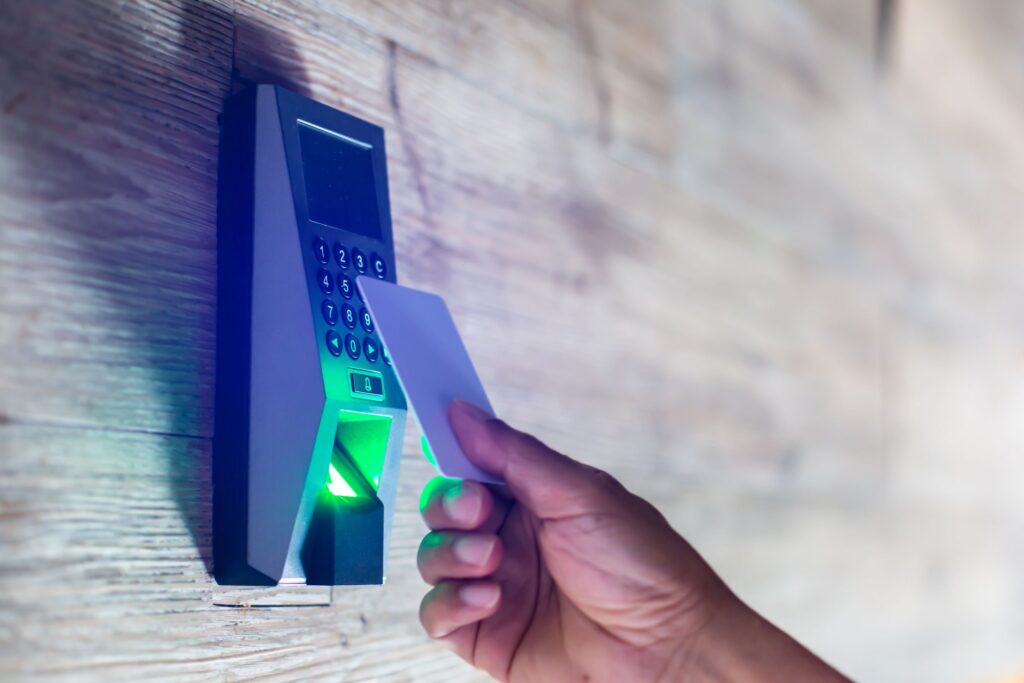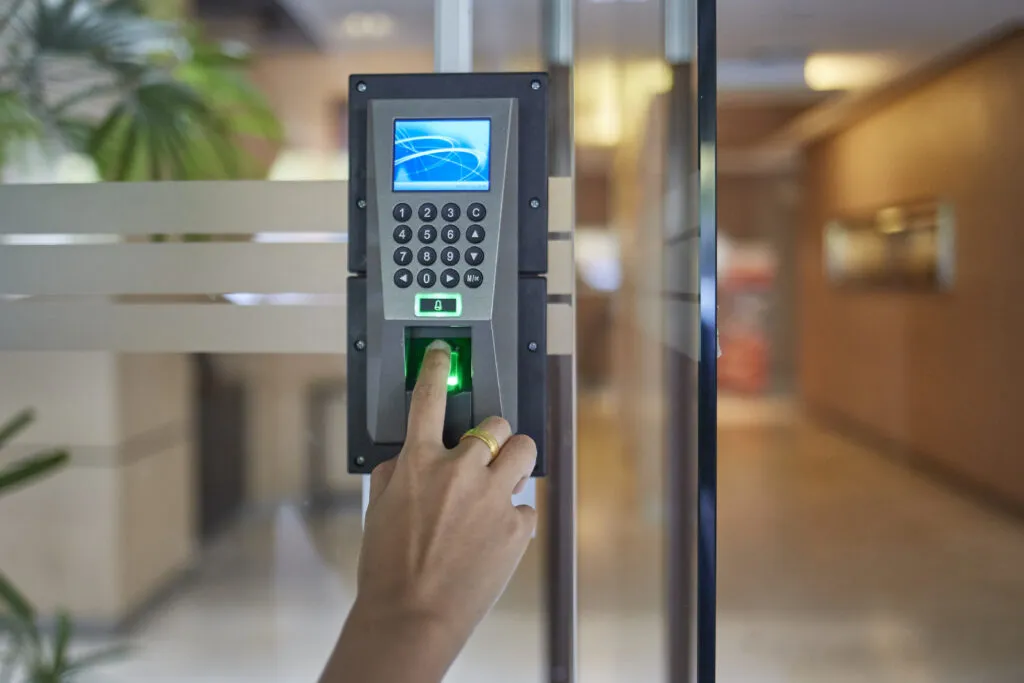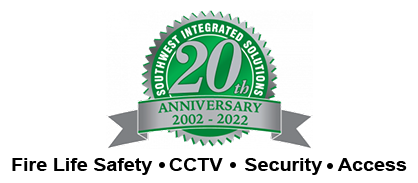What Is Access Control System
At its most basic, access control is a method of managing who and when accesses an area. The individual entering may be an employee, a contractor, or a guest, and they could be walking, driving, or taking another means of transportation. The area they are entering may be a site, a structure, a room, or a cabinet.
Access control systems are an essential component of a comprehensive security program to discourage and decrease criminal conduct and violations of an organization’s security regulations. However, it is vital to note that it is just a tiny component.

What is Access Control System
The access control system is the electronic system that allows authorized individuals to access through a security portal without requiring a security officer to examine and authenticate the person’s authorization, often by utilizing a credential to submit to the system to verify their authority. A security portal is a gateway or route that allows access to a secure border. Standard doors, revolving doors, vestibules, and vehicle access barriers are traditional security gateways.
To secure a facility, organizations use electronic access control systems to track employee access to restricted business locations and proprietary areas, such as data centers. These systems rely on user credentials, access card readers, auditing, and reports to track employee access to restricted business locations and proprietary areas, such as data centers. These systems include access control panels to limit access to rooms and buildings and lockdown and alarm features to prevent unwanted access or operations.
Its Main Purpose
The primary purpose of access control is to allow only those allowed to enter a building or workplace. For many years, the deadbolt lock and accompanying brass key were the gold standards of access control; nevertheless, modern enterprises need more. They want to control who comes and goes through their doors, but they also want to be able to monitor and manage access. Keys have now been handed over to computer-based electronic access control systems, which offer rapid and straightforward access to authorized individuals while prohibiting access to unauthorized individuals.
Instead of keys, we now carry ID badges or access cards to access restricted places. Access control systems can also use to limit access to workstations, sensitive data file rooms, printers, and entrance doors. A landlord or management agency often maintains exterior door access in more significant buildings, whereas the tenant firm controls internal office door access.
People unfamiliar with access control may believe that the system consists of just the card and the card reader positioned on the wall next to the entrance. But a few more pieces are functioning behind the scenes to create the magic that provides access to the correct individual. That is the focus of this guide. Reading it will give you a complete grasp of how access control systems function and the vocabulary needed to engage with suppliers.
Components of Access Control System
Access control systems aim to restrict who has access to a building, facility, or “for authorized individuals only” location. They assign employees, freelancers, executives, and suppliers to different sorts of groups or access levels. Everyone may enter the main entrance with their access cards, but they will not be allowed to access areas containing privileged or secure information.
They grouped these components into three categories for clarity: admin-facing components, user-facing components, and infrastructure components. Let’s go into the specifics of the three groups.
Admin-Facing Components
The management portal, or dashboard, is the admin-facing side. The head of security, office administrator, or IT manager can limit who may enter the premises under conditions. It includes a management dashboard, frequently hosted in the cloud, and a method to supply access, such as a card programming device.
The manual operations portion of more complex systems can be automated. For example, by linking the access dashboard to the business directory of personnel, provisioning (providing and removing access) may be done automatically. A new hire automatically creates further access via an API or an integrating database service when a new hire enters the system.
User-Facing Components
The most well-known access control system components are cards, ID badges, and, more recently, smartphone applications that elicit an OK beep. These are sometimes referred to as credentials since they include the user’s data that instructs the reader to allow you permission to be on the premises. In other words, you are an authorized entrant.
Access cards are proximity two to six inches in front of the card reader rather than a swipe or insert like credit cards. For phone apps, the same method performs. The advantage of employing credentials is individualized, allowing each unlocks event to track back to the individual connected with them.

Infrastructure Components
The infrastructure components are those that rely on the building infrastructure to function. The most visible features are the locks; however, others, such as the server, controller, and cables.
Access Control Lock
The use of electronic locks is to unlock the mounted door. The wire typically powers them. Some coils will lock when power is applied, while others will unlock when force is applied. The first is known as fail-safe locks, while the second is known as fail-secure locks.
Which to employ is determined by the region to be secured. Entry doors necessitate fail-safe locks to comply with building requirements and fire laws, which require individuals to be able to depart at any moment, including during a power outage. IT rooms should be fail-securely wired since they must stay secured, including emergencies. Fail secure doors must also have electrified push bars to help people leave swiftly in a fire.
Access Control Server
Every access control system necessitates using a server on which they keep permissions in an access database. It serves as the central processing unit (CPU) or “brain” of the access control system. The server decides whether or not to open the door by comparing the credential given to the certificates approved for that door. A dedicated local Windows or Linux machine, a cloud server, or even a decentralized server can act as the server. The server also detects and records access activity and events, and it allows administrators to run reports on prior data occurrences for a specified period.
If they employ a locally-hosted access control server, the access software usually operates on a dedicated workstation. Its administration necessitates the presence of the administrator on-site. Because dealing with several local servers can be difficult for multi-facility administration, cloud-based servers are gaining popularity in this space.
Access Control Controller (or Panel)
The access control panel, also known as the access control field panel or intelligent controller, is not visible to most people at a facility since they installed it in the IT room or the electrical, communications closet, or telephone. This precaution is necessary since all of the locks hook to it. When a valid credential submits to the door reader, the panel gets a request to unlock a specific relay that links to the particular door wire.
Low-Voltage Cables
Cables are an essential component of access control and maybe pretty expensive if put incorrectly; thus, you should never disregard them when designing an access control system. When constructing a facility, you must describe all wires so that the general contractor understands what to do. If the cables aren’t planned, for now, they’ll have to be installed later, which means someone will have to drill into or put wires on all of the freshly painted walls.
The Importance of Access Control System
Aside from the apparent necessity for an extra layer of protection at a facility, there are several more reasons why access control—precisely, cloud-based access control—should be a vital aspect of any business.
Physical Security and Safety
Let us start with the most apparent use of access control: security. Installing an access control system keeps unwanted visitors out of your facility, but it does more! It also ensures that contacts, such as couriers delivering items for your company or visits to your workplace, are carefully managed.
Having an access control system means you have control over all sections of your facility and unauthorized persons aren’t able to gain access to archives and servers.
Visitor and Operations Management
Some access control solutions interface with your directories to enable automatic user provisioning and de-provisioning. It implies that access management operations such as onboarding and offboarding are handled automatically. Also, it eliminates maintenance and manual work for your administrators and the possibility of human mistakes.
Access control also streamlines your visitor management operations by guaranteeing that no visitor enters your facility without the approval of an administrator.
Compliance
In recent years, compliance has been a significant motivator for businesses to move to access control. When faced with a breach, many security managers may find themselves in hot water if they have not adhered to several certifications. A certified access control system boosts your credibility, makes you safer and more secure against hackers and viruses, and eventually leads to more income. Here are some instances of situations when compliance necessitates the use of an access control system:
- HIPAA health data standards must follow by health insurance organizations, hospitals, physicians’ offices.
- PCI credit card data laws apply to banks, insurance firms, and any other company that takes and processes credit cards.
- SaaS companies, data centers, and any other organization want to maintain SOC2 cybersecurity standards.
Data and Intellectual Property (IP) Protection
Businesses that deal with confidential data and intellectual property, such as software developers, legal firms, entrepreneurs, and pharmaceutical businesses, must not only regulate who enters their premises but also which sections this personnel are permitted to access and when. Modern access control systems allow for granular permissions based on group memberships and give insights and analytics, which are requirements for business and regulatory reasons.
Revenue
Driving income is not frequently associated with access control or, more broadly, security solutions. However, data has demonstrated that our system is a good income generator in various use situations. Having an access control system may assist you in transforming your firm into a 24/7/365 operation. The efficient security level and privileged access for persons in your directory ensure that you may leave your facility open even when no personnel is verifying the entry. It results in extended open hours and higher revenue while incurring no additional expenditures.
Shared workplaces are another scenario in which access is an income generator. Having many meeting spaces in your coworking location might be a nuisance in certain circumstances. That’s all space that owners aren’t monetizing, and it means fewer workstations and fewer customers. Installing a reader at the door to each meeting room and implementing a paywall will help you make the most of your space. It implies that members will now have to pay the price to utilize phone booths and meeting rooms. Therefore, it will result in more money without the need for increased staffing or marketing initiatives.
Authentication and User Experience
Modern systems provide a better level of security not by imposing extra hurdles to how people enter a facility. However, it is by using technology to provide a seamless access experience mixed with greater administrative control.

Access Control System Models
Discretionary Access Control (DAC)
The user has direct control over all applications and data in the system. It is a long way of stating that one mode of access always opens all doors.
Mandatory Access Control (MAC)
It is the inverse of DAC. When MAC is the paradigm, access restricts via a policy, hardware component, or software component. It might be a keypad or a password.
Role-Based Access Control (RBAC)
They grant permissions based on roles, and roles allocates to people when this paradigm applies. Because administrators can centrally manage and administrate responsibilities, this paradigm is user-friendly.
What to Consider When Selecting an Access Control System
When evaluating different suppliers, there are numerous aspects to consider. Here’s a summary of some of the critical questions you should consider, separated into three categories: compatibility, maintenance, and features.
Compatibility
When selecting an access control system, compatibility is critical. Making sure the equipment you wish to buy is suitable for your facility may save you time and money during installation. A highly compatible system also simplifies facility maintenance and ensures high security. Some compatibility-related queries include:
- Is it open to third-party hardware and free of lock-in?
- Does it work in conjunction with surveillance and other security systems?
- How simple is it to use and set up?
- Is there an open API available?
- Maintenance and Features
Features
When selecting any security system for your company, features are the deciding factor. What is more challenging is determining which aspects you should prioritize to discover a solution that meets your fundamental requirements and saves you time in the long run.
Select an access control provider with excellent customer service to promptly resolve any concerns during installation or regular system usage. It would help if you also thought about the following feature-related questions:
- Is it possible to use two-factor authentication?
- What communication channels does it use (for example, Bluetooth, NFC, RFID, PoE, and so on)?
- Is the hardware based on IP?
- Is it compatible with various authentication methods, such as mobile applications, cards, key fobs, remote unlocks, etc.?
- Do all access methods provide end-to-end data encryption?
- Is there an offline mode?
- Does it include customer service?
- What kinds of access controls are provided (for example, role-based access, time-based access, count-based access, level-based access, and so on)?
- Is lockdown possible? Is it at the entrance level, the place level, or both?

